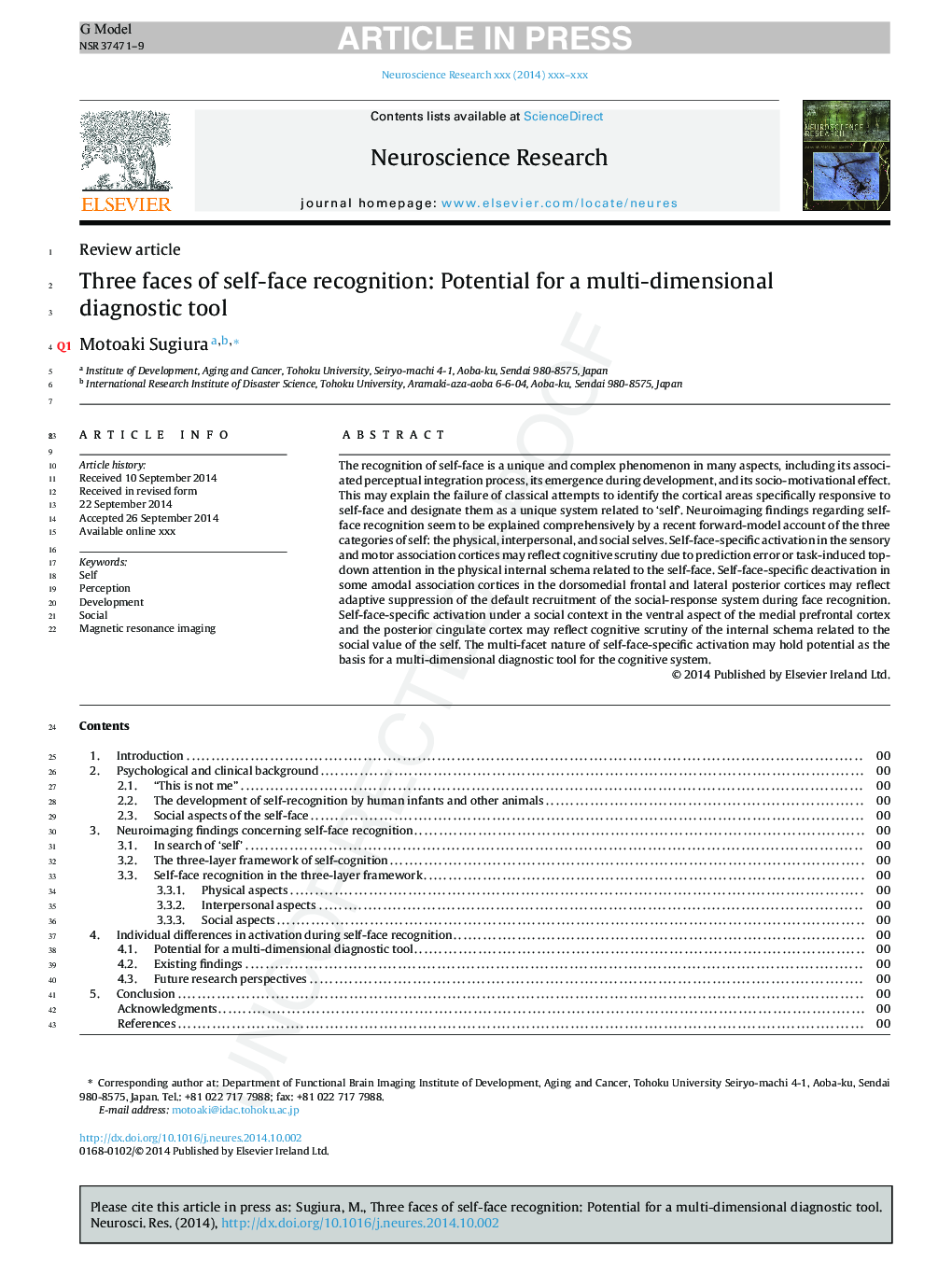| Article ID | Journal | Published Year | Pages | File Type |
|---|---|---|---|---|
| 6286168 | Neuroscience Research | 2015 | 9 Pages |
Abstract
The recognition of self-face is a unique and complex phenomenon in many aspects, including its associated perceptual integration process, its emergence during development, and its socio-motivational effect. This may explain the failure of classical attempts to identify the cortical areas specifically responsive to self-face and designate them as a unique system related to 'self'. Neuroimaging findings regarding self-face recognition seem to be explained comprehensively by a recent forward-model account of the three categories of self: the physical, interpersonal, and social selves. Self-face-specific activation in the sensory and motor association cortices may reflect cognitive scrutiny due to prediction error or task-induced top-down attention in the physical internal schema related to the self-face. Self-face-specific deactivation in some amodal association cortices in the dorsomedial frontal and lateral posterior cortices may reflect adaptive suppression of the default recruitment of the social-response system during face recognition. Self-face-specific activation under a social context in the ventral aspect of the medial prefrontal cortex and the posterior cingulate cortex may reflect cognitive scrutiny of the internal schema related to the social value of the self. The multi-facet nature of self-face-specific activation may hold potential as the basis for a multi-dimensional diagnostic tool for the cognitive system.
Related Topics
Life Sciences
Neuroscience
Neuroscience (General)
Authors
Motoaki Sugiura,
